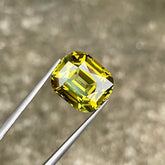May’s Birthstone: Emeralds
 Welcome to Gandhara Gems, where we're dedicated to unlocking the secrets and beauty of gemstones. Today, we embark on an in-depth exploration of May's birthstone – the alluring emerald. Join us as we delve into the fascinating history, intricate formation process, symbolic significance, and practical considerations when choosing these captivating gems. From ancient legends to modern-day allure, let's unravel the mysteries and complexities of emeralds together.
Welcome to Gandhara Gems, where we're dedicated to unlocking the secrets and beauty of gemstones. Today, we embark on an in-depth exploration of May's birthstone – the alluring emerald. Join us as we delve into the fascinating history, intricate formation process, symbolic significance, and practical considerations when choosing these captivating gems. From ancient legends to modern-day allure, let's unravel the mysteries and complexities of emeralds together.

Emeralds: A Gemstone Steeped in History and Mystery
Emeralds have long captivated humanity with their mesmerizing green hue and storied past. Dating back to ancient civilizations such as the Egyptians, Greeks, and Romans, emeralds have been revered for their striking beauty and perceived mystical properties. The color green has historically been associated with fertility, growth, and rebirth, making emeralds symbols of vitality and renewal. From royal adornments to sacred talismans, emeralds have adorned the crowns, jewelry, and artifacts of cultures around the world, leaving an indelible mark on history and culture.
How Emeralds Are Formed
Emeralds, like all gemstones, have a fascinating geological origin that spans millions of years and involves intricate processes deep within the Earth's crust. The journey of an emerald begins with the presence of specific mineral components and the right geological conditions conducive to its formation.

Emeralds belong to the beryl family of minerals, which also includes aquamarine and morganite. What distinguishes emeralds from other beryls is the presence of trace elements, primarily chromium and vanadium, which imbue them with their distinctive green color. The formation of emeralds occurs primarily in metamorphic and igneous environments, where heat, pressure, and hydrothermal fluids interact to create the perfect conditions for their crystallization.
Metamorphic Environments:
In metamorphic settings, emeralds typically form within rocks subjected to intense heat and pressure during tectonic events such as mountain-building processes. The metamorphism of pre-existing rocks, such as schists, gneisses, and pegmatites, triggers the recrystallization of minerals and the formation of emerald-bearing veins and deposits. Over time, these emerald-bearing rocks may undergo further geological processes, including uplift, erosion, and weathering, which expose the emeralds to the Earth's surface.
Igneous Environments:
In igneous settings, emeralds can form through the crystallization of beryl-rich magma within the Earth's crust. During volcanic activity, magma containing dissolved elements and minerals, including beryl precursors, may intrude into existing rock formations. As the magma cools and solidifies, emerald crystals can precipitate out of the solution and become incorporated into the surrounding rock matrix. Over time, geological processes such as erosion and volcanic activity may expose these emerald-bearing rocks, allowing miners to extract the gemstones.
Hydrothermal Processes:
Another important mechanism for emerald formation is hydrothermal activity, where hot fluids rich in minerals circulate through fractures and cavities in the Earth's crust. These hydrothermal fluids, often associated with volcanic or tectonic activity, can transport dissolved beryl precursors, along with chromium and vanadium, to sites where emerald crystals nucleate and grow. The gradual cooling and deposition of these mineral-rich fluids within the fractures and cavities result in the formation of emerald veins and pockets.
Jardin and Other Inclusions:
During their formation, emeralds may incorporate various mineral inclusions, known as jardin, as well as other internal features such as fractures and cleavage planes. These natural imperfections are a testament to the geological processes that shaped the gemstone and can provide valuable insights into its origin and authenticity. While Jardin and other inclusions may affect the clarity of the emerald, they are often regarded as desirable characteristics that enhance its character and allure.


In summary, the geological genesis of emeralds is a complex and fascinating process that involves a combination of heat, pressure, fluid activity, and mineral interactions deep within the Earth's crust. From metamorphic transformations to igneous intrusions and hydrothermal circulation, each emerald bears the imprint of its geological history, making it a unique and precious gemstone cherished for its beauty, rarity, and enduring allure.
Symbolism and Significance of Emeralds:
Emeralds have fascinated humanity for millennia, not only for their stunning beauty but also for the rich symbolism and cultural significance they carry. Across different cultures and civilizations, emeralds have been revered as symbols of love, hope, and prosperity, with deep-rooted meanings that transcend mere adornment.
Ancient Legends and Beliefs:
In ancient times, emeralds were believed to possess mystical powers and supernatural properties. The vibrant green color of emeralds was associated with the goddess Venus, symbolizing love, fertility, and rebirth.

In Egyptian mythology, emeralds were considered sacred to the goddess Isis, who was revered as the protector of the dead and the symbol of life. The ancient Incas of South America also held emeralds in high esteem, believing them to be the tears of the sun god Inti.
Love and Romance:

Throughout history, emeralds have been closely linked to matters of the heart, making them popular choices for romantic gestures and expressions of affection. The lush green color of emeralds has long been associated with the verdant hues of nature and the promise of new beginnings, making them ideal symbols of eternal love and devotion. Cleopatra, the legendary queen of Egypt, was renowned for her love of emeralds and often adorned herself with these precious gemstones as symbols of her passionate affairs.
Healing and Protection:

In addition to their associations with love and romance, emeralds were also believed to possess healing properties and protective qualities. In ancient times, emeralds were thought to have the power to soothe the eyes and alleviate vision problems. They were also believed to provide protection against evil spirits and ward off negative energies. Emeralds were often worn as talismans or amulets by warriors and travelers seeking safety and good fortune on their journeys.
Renewal and Growth:

The lush green color of emeralds has long been synonymous with growth, vitality, and renewal, particularly during the spring season. Just as the earth awakens from its winter slumber and bursts forth with new life, emeralds symbolize the promise of growth and rejuvenation. Their vibrant hue evokes images of lush forests, verdant meadows, and blooming gardens, inspiring feelings of hope, optimism, and abundance.
Modern-Day Significance:
In contemporary culture, emeralds continue to hold sway as symbols of luxury, sophistication, and prestige. From red carpet events to royal engagements, emeralds are favored by celebrities, dignitaries, and discerning collectors for their timeless elegance and enduring allure. Whether worn as statement pieces or cherished heirlooms, emeralds remain coveted treasures that transcend fashion trends and stand the test of time.

In summary, the symbolism and significance of emeralds are as multifaceted as the gemstones themselves. From their ancient origins steeped in myth and legend to their enduring appeal in modern times, emeralds continue to captivate hearts and minds with their beauty, symbolism, and cultural resonance. Whether given as tokens of love, worn as protective talismans, or admired for their natural splendor, emeralds hold a special place in the hearts of gemstone enthusiasts worldwide.
Selecting the Perfect Emerald: Factors to Consider
When choosing an emerald, several factors come into play to determine its quality and value. The Four Cs – color, clarity, cut, and carat weight – are essential considerations for evaluating emeralds:
Color: The most desirable emeralds exhibit a pure, intense green hue with a hint of blue, free from any brownish or grayish undertones. The color should be evenly distributed throughout the gemstone, with no zoning or blotches.
Clarity: While emeralds often contain natural inclusions, such as jardin and other internal fractures, those with fewer visible flaws and a higher degree of transparency are considered more valuable. However, minor inclusions are accepted as part of the emerald's character and can enhance its beauty when properly positioned.
Cut: The cut of an emerald influences its brilliance, sparkle, and overall appearance. The classic emerald cut, with its rectangular or square shape and step-cut facets, is the most popular choice for highlighting the gemstone's color and clarity. However, emeralds can also be fashioned into various other shapes, including oval, round, pear, and marquise, depending on personal preference and style.
Carat Weight: The size of an emerald is measured in carats, with larger stones generally commanding higher prices. However, it's essential to strike a balance between carat weight and quality, as smaller emeralds of exceptional color, clarity, and cut may be more valuable than larger stones with inferior characteristics.
Exploring Emeralds with Gandhara Gems: A Commitment to Excellence
At Gandhara Gems, we're committed to offering discerning customers an exquisite selection of emeralds sourced from reputable mines and trusted suppliers worldwide. Each emerald in our collection undergoes rigorous inspection and certification to ensure exceptional quality, authenticity, and value. Whether you're searching for a statement piece to mark a special occasion or a meaningful gift for a loved one, our team of experts is dedicated to helping you find the perfect emerald to suit your preferences and budget.
Experience the Magic of Emeralds with Gandhara Gems
Ready to embark on your journey into the mesmerizing world of emeralds? Explore our curated collection of emeralds today and discover the timeless elegance, beauty, and symbolism of these captivating gemstones. With our commitment to excellence, integrity, and customer satisfaction, Gandhara Gems ensures that each emerald is a true masterpiece, destined to be treasured for generations to come. Don't miss out on the opportunity to add a touch of sophistication and splendor to your jewelry collection with Gandhara Gems!
















Leave a comment
Please note, comments need to be approved before they are published.